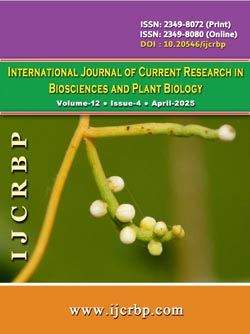 |
Online ISSN : 2349-8080 Issues : 12 per year Publisher : Excellent Publishers Email : editorinchiefijcrbp@gmail.com |
Breast cancer is a heterogeneous disease with various morphological and molecular subtypes. The histological type, tumor grade, stage, pathological tumor size, and axillary lymph node involvement are key morphological factors in breast cancer classification. This study aimed to analyze the clinicopathological features of breast cancer patients. Paraffin-embedded tissue samples were collected from 132 previously diagnosed breast cancer patients at Al-Sadr Teaching Hospital in Basrah, Iraq, from May 2018 to April 2019. Clinical and pathological data were analyzed, focusing on tumor size, histological type, grade, stage, and lymph node involvement. Tumor histological parameters were assessed using the Bloom and Richardson grading method. The mean age of patients was 44.5 years, with 76.8% under 50 years old. Infiltrating ductal carcinoma (NOS) was found in 82.6% of cases, followed by infiltrating lobular carcinoma (8.3%). High-grade tumors (Grade III and II) were detected in 96.2% of cases, and 85.6% presented at advanced stages (Stage III and II). Tumor sizes T2 and T3 were observed in 87.9% of cases, and positive axillary lymph node involvement was present in 57.6% (P < 0.05). Breast cancer patients in this study presented at a younger age compared to Western populations, indicating that early-onset breast cancer (<50 years) is more aggressive based on the studied prognostic factors. In Iraq, a high frequency of breast cancer was observed in Basrah, likely due to strong family history, environmental factors, and advanced-stage diagnosis.
